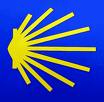Day 5 would have us walk about 19 km (12 miles) in around a 4.5 hour period, leaving Boente to head to our next overnight stop in Salceda. The group left together every morning and, generally, stayed in proximity of each other but a few of us would generally spend part of the morning walking on our own or in silence. Oh, we enjoyed each other a great bit but the Camino is an invitation to pray and ponder, much as it is also very social (I mean, here are all these people walking in one direction, with one goal in mind) – or, at least, as social as one decides to make it.
As usual, the variety in the terrain and passing through small towns and rural areas were a rewarding aspect of the walk. But even though we may be in the middle of nowhere at any given moment, we were not far from a potential place for a “rest stop” or getting a bite to eat.
In Salceda, we stayed at one of the nicest places we were to stay at the Albergue Turístico Salceda, a little bit of the trail but no more than a 5-10 minute walk away.
It was a nice day and, after showering, we lounged outdoors resting and relaxing – with a nice bottle of Albariño wine. I’d call Day 5 another successful day on the Camino!
Read more about my Camino:
– Day 1
– Day 2
– Day 3
– Day 4































































































 2010 is a Holy Year (aka Jubilee year) on the Camino de Santiago… so, if you are looking for an interesting and unique travel experience, why not walk 500 miles across Northern Spain…on an ancient pilgrimage route…and if you do it in 2010, you’ll probably be joining 200,000 or more other people!!
2010 is a Holy Year (aka Jubilee year) on the Camino de Santiago… so, if you are looking for an interesting and unique travel experience, why not walk 500 miles across Northern Spain…on an ancient pilgrimage route…and if you do it in 2010, you’ll probably be joining 200,000 or more other people!!









